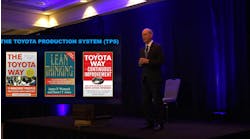Costs Up, Capacity Down: 9 Supply Chain Strategies for Tough Times
“When will it end?”
It’s a question we hear on every call, from brand owners large and small, around the globe. Supply chains are capacity-constrained and prices keep going up because people are spending on stuff vs. experiences. The pressure is turning board meetings upside-down, related to material availability, freight costs, labor scarcity, container shortages, and more.
The operational impact? Pick a headache: skyrocketing shipping costs ($20,000 for a 40’ container? Yep, it’s happening…), missed delivery schedules, tied-up working capital, heated customer service calls and more.
Fasten your seatbelt, we’re in for a long, bumpy ride. Many believe this is what the new normal will look like well into 2023.
According to ING, there are five reasons why supply chain Armageddon may continue into 2023, including imbalances in supply/demand, few alternatives to ocean freight, continued port congestion due to labor shortages, imbalances in recovery rates by country, and higher rates of cancelled sailings. ING reports that we should see some relief when about 6% in shipping capacity comes online in 2023 (as with chips, it takes time to build); however, “the coming increase in ocean freight capacity will put downward pressure on shipping costs but won’t necessarily return freight rates to their pre-pandemic levels, as container liners seem to have learned to manage capacity better in their alliances.”
The bottom line? Higher container costs may be here to stay…
Some are taking extreme measures, reminiscent of the first wild weeks of the pandemic when major sports teams chartered cargo planes to airlift PPE to Covid hotspots. This week, Home Depot said enough was enough and boldly announced it was taking control of shipping … and contracted exclusive use of a container ship. “We have a ship that’s solely going to be ours and it’s just going to go back and forth with 100% dedicated to Home Depot,” the company’s president and COO, Ted Decker, stated.
OK, few brand owners have that kind of power … so what can the rest of us do? If you’re a low volume shipper, your options are shrinking. According to Crane Worldwide Logistics, “starting June 14th, 2021, FedEx Freight is shedding 1,400 lower-margin less than truckload (LTL) customers, affecting thousands of locations, to reduce terminal bottlenecks and shipping delays as unprecedented amounts of tonnage pour into the LTL sector.” We believe other companies will follow suit in coming weeks.
If you’re a medium volume producer – here are nine strategies leaders are using to manage risk during this volatile environment.
First, let’s discuss freight.
1. Forecasting/better allocation
Suppliers will benefit from a proactive, 12-month forecast. While they can appreciate the difficulty of you knowing what is happening with the market, material prices, logistics and your customer’s whims, anything (even if “directionally”) would be useful for their overall business planning. Be curious and learn all you can about your supplier’s material ordering practices. The more you can share, the stronger position you’ll be in for a higher allocation (getting more of their limited capacity). There’s power in predictability.
2. Freight bundling
Bundling LCL deliveries creates buying power. Bigger fish are more attractive to carriers. When our team finds capacity, we’re grouping client shipments into larger shipments to create economies of scale. Carriers are giving priority to full containers vs. LCL.
3. Fast boats
Less well-known but cheaper than air, “fast boats” get goods quicker to port. Upon arrival, goods receive priority routing and quicker customs clearance, cutting about two weeks off the process.
Next, here are a few ideas for managing shortages and rising material prices.
4. Managing terms
Material prices are at historical highs across many categories: ABS polymer is up 30% year-over-year, iron ore is up 100% YOY, stainless steel is up 30% YOY, hot-rolled steel is up 90% YOY, etc. The days of 100% payment upon receipt of goods feel like ancient history. Suppliers are demanding significant down payments (in some cases 100%) and the balance at bill of lading. Suppliers’ asks are more assertive because their sub-suppliers are demanding 100% payment upfront for materials. Buyers refusing these terms will be bypassed in favor of others lined up and ready to pay (in these times of high demand and short material supply). The numbers of broken contracts, with fixed pricing, fixed shipping, is on the rise. Buyers are being asked to pay spot prices linked to material pricing and actual freight. How to manage? If you can (we realize in many industries this is not possible), have clearly defined contracts that describe when and how to adjust pricing based upon agreed to indices. There are two benefits: 1) help avoid unpredictable spot pricing and 2) less arguing about when and how to adjust pricing. This practice applies for both supplier and customer agreements to ensure that you have the ability to pass along increases (if you can).
5. Produce and/or de-feature
New automobiles have between 40 to 150 chips, and shortages are causing plant shutdowns worldwide. To cope, Ford continues to produce F150s in Kentucky, and is renting parking lots to store them until chip sets are available. GM is defeaturing, for example, by removing its intelligent rearview mirror system temporarily. With lead times on chips extending out 200, 250, even 350+ days … maybe that old-school analog speedometer will make a comeback?
6. Force majeure
This tactic is utilized in some industries, but not in others. We’re increasingly hearing about exercised clauses in automotive where contracts tie parts availability to performance, and suppliers face stiff fines for lack of delivery. Force majeure is less seen in consumer goods, where big-box retailers hold the cards and simply remove a product from store shelves and replace it with another. If your contracts with customers have built-in penalties, network around to find out if force majeure letters are being circulated, by whom, for what, and when.
7. Keep customers and distributors alive
Successful strategies your suppliers are using to manage allocations upstream can be useful when managing expectations and satisfaction of your own customers downstream. The basic idea is to avoid starving the customers on which your revenues (and theirs) depend. Review your allocations often to ensure the channel on which you’ve built revenue success stays alive.
8. Communicate like crazy
Arm your salespeople with the resources to set expectations. Given them access to material pricing indexes, weekly shipping cost data, currency exchanges and other tools to explain the volatility that you are experiencing. This will take the edge off tough conversations. Customer service is key.
9. Consider direct
If you’re doing business with a trading company, get better visibility, quality, service (and potentially better costing) through direct relationships with suppliers.
For many months, consumers shifted spend to goods when they could not spend on services like vacations and dining out. Today, demand is outstripping supply in both product and service sectors (good luck renting a car this summer). The bullwhip effect of COVID will be with us for a while.
What creative, proactive strategy is working for you? We welcome your feedback.
Having lived and worked in Asia for several years, Jennifer Clement helps executives navigate Asian business strategy. Jennifer is a business acceleration leader for Complete Manufacturing and Distribution (CMD), a company that helps companies worldwide accelerate results with Asia initiatives, including market strategy, sourcing, manufacturing, logistics, quality management, facility construction, business process outsourcing, continuous improvement, e-commerce, and more.




